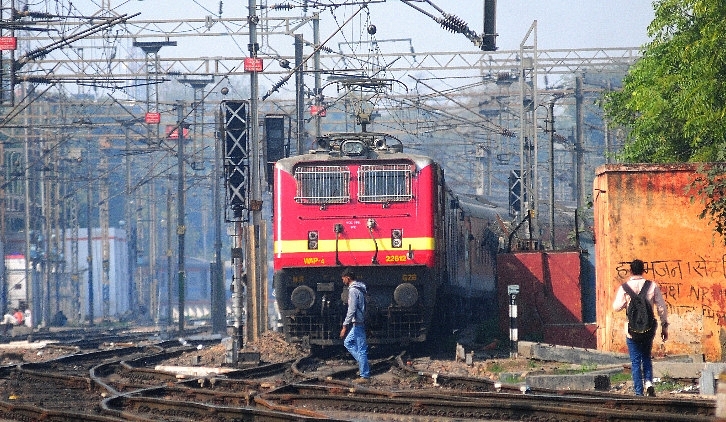Insta
Indian Railways To Use Explosive Detonators To Test Alertness Of Loco Pilots While Running Trains

The detonators are strong enough for drivers to hear beyond the noise of the train, without causing any damage. (representational image) (Ramesh Pathania/Mint via Getty Images)
The Indian Railways are testing the alertness of the staff by using an explosive device that is equivalent to an anti-tank landmine but emits a loud sound, The Hindu reports.
The railways get detonators containing proprietary chemicals from an ordnance factory specialising in explosives. These pressure bombs are flat, circular explosives which explode after getting triggered by the weight of a locomotive or a wagon wheel.
These detonators are used by the railways in a restricted manner to stop a train from chugging into a disaster. The detonators come with metal clips in a box of ten from the ordnance factory to the Railways at the cost of Rs 163. The railways allot each station two boxes and one each to gatemen at level crossings.
“Each of these detonators has a shelf life of five years. We usually do not let the unused ones go waste and spring surprises on the running as well as station staff to test their alertness,” M.K. Agarwal, Principal Chief Safety Officer of Northeast Frontier Railway (NFR) said.
During such an emergency, the gateman needs to attach a detonator on a rail at 600 m from the level crossing and three more detonators at 10 m apart till a distance of 1,200 m. The driver needs to apply brakes when the detonators are triggered due to the weight of wheels.
“The detonators are powerful enough for locomotive drivers to hear beyond the noise of the train. But they do not cause any damage to the railway line,” Agarwal adds.
Support Swarajya's 50 Ground Reports Project & Sponsor A Story
Every general election Swarajya does a 50 ground reports project.
Aimed only at serious readers and those who appreciate the nuances of political undercurrents, the project provides a sense of India's electoral landscape. As you know, these reports are produced after considerable investment of travel, time and effort on the ground.
This time too we've kicked off the project in style and have covered over 30 constituencies already. If you're someone who appreciates such work and have enjoyed our coverage please consider sponsoring a ground report for just Rs 2999 to Rs 19,999 - it goes a long way in helping us produce more quality reportage.
You can also back this project by becoming a subscriber for as little as Rs 999 - so do click on this links and choose a plan that suits you and back us.
Click below to contribute.
Latest